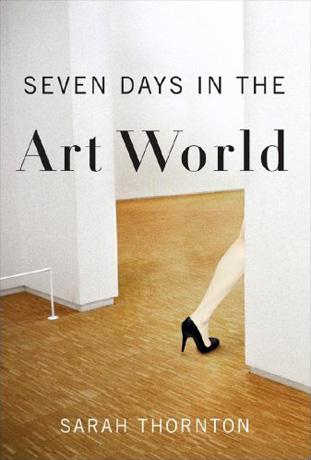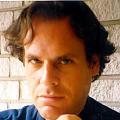My comments on Seven Days in the Art World, a new book by Sarah Thornton published by W. W. Norton, appear below the cover image. They were first posted online in a thread on the book on Artworld Salon.

He said, she said. When Ms. Thornton indicates she "worked hard to gain access" I do believe her. She seems to have established first name basis, in relatively short order, with a whole slew of movers and shakers, from auction house honchos to art dealers, from globe hopping curators to critics and academics, from magazine editors to museum directors, from artists to collectors.
She managed to accompany LA gallerists Blum and Poe on a dense travelogue through Murakami's five Japanese studios. She attended the Venice Biennale with an enviable portfolio of events, parties and contacts under her arm. She scored a freelance gig at Artforum.com in the process of writing her chapter on the magazine's print edition. That's what I call deep penetration! (The chant from Tod Browning's film Freaks comes to mind: ""We accept her! We accept her! One of us! One of us!") Although she modestly downplays her game with a throwaway social science-ism - "Participation seemed to be the only way to enable observation." - proving that, yes, she is a trained sociologist. But beyond native intelligence and determination, very good writing skills and (quite likely) a certain charm, might it have been the imprimatur of a W. W. Norton publication, a tell-all book about the contemporary art world? Could this have opened doors? I would love to know her secret.
Ossian's phrase, "in thrall to the art world and not nearly critical or even conclusive enough", is true to the extent that one imagines journalists embedded with the US Army in Iraq as somewhat compromised in their coverage of the war by the very aegis of military protection. The international art scene is no less a minefield than Anbar Province. One needs a guide to make introductions, to smooth one's way through the various sheikdoms, and to cover one's back from both hostile and "friendly" fire. Does this dependency strain the bounds of objectivity? To paraphrase William Jefferson Clinton, that all depends on what "objectivity" is.
The book is a quick, enjoyable but not overly light read. There are not that many revelations, but rather a pervading tone of measured observation, a commonsense approach that profits from diligent research, accurate reportage, lots of relevant interview material, and a commendable ability to collate and cross reference sources. She has done her homework, and it shows. For example, a casual aside from someone in a corridor of academe can later wind up illustrating or elaborating a tendency at an art fair or a studio visit.
I felt myself on familiar but well prepared ground, often nodding along with Thornton. She has a keen eye and the ability to quickly define a situation or characterize an individual with a few swift establishing strokes. This is an invaluable skill in journalism or exposé, the essential genre of Seven Days in the Art World. So when she encapsulates Knight Landesman as "always dressed in primary colors" and "treating advertising sales as if they were performance art", or describes the Rubells as "wearing running shoes and baggy trousers with pockets and toggles in unlikely places", as well as the family's customary huddle when making decisions before a purchase, I can only say "Amen. Been there, seen that." Would her observations be as resonant with someone who did not already know the territory? This I cannot say.
As to the central conceit, that we are reading about seven days in the art trenches rather than five years of participant/observer status, I suppose it is metaphors like this that satisfy a need for Aristotelian unity. But regarding Ossian's desire for a conclusion, I wonder whether it's possible or even advisable at this point, especially with changing economic conditions, uncertainty, and also the continuing proliferation of players and institutions in the international art scrum. I am inclined to agree with Thornton that Seven Days is "the fieldwork".
An excerpt from a BBC interview:

Age, pattern recognition
Since I'm no longer on any publisher's freebie list I haven't read the book but looking at the jpeg of the cover I couldn't help thinking that rather than the fashionable shoe and lithe leg portrayed scurrying forth a more familiar image of the artworld would be the swollen ankles of a Magda Sawon of Postmasters soaking in a bucket of ice and maybe a bag of ice on her head.
Age doesn't bring wisdom so much as knack for pattern recognition. Been there, done that isn't just an ironic hipster stance.
There is another book I haven't read about the Hirst phenomenon and I'm sure there will be others. I stopped reading Peter Plagens' online novel around Chapter 20 since I long ago realized the artworld was an elaborate dating service for rich guys. Big news.
Tell me something I don't know. That's my challenge to the artworld these days. Well, OK, to the artists mainly. That's your job now, artists.